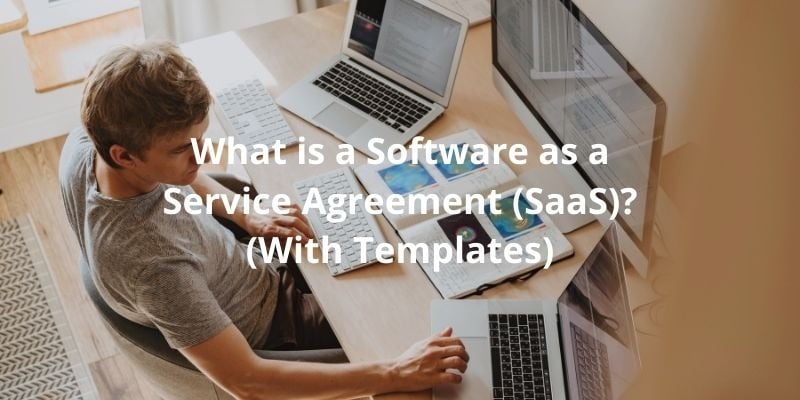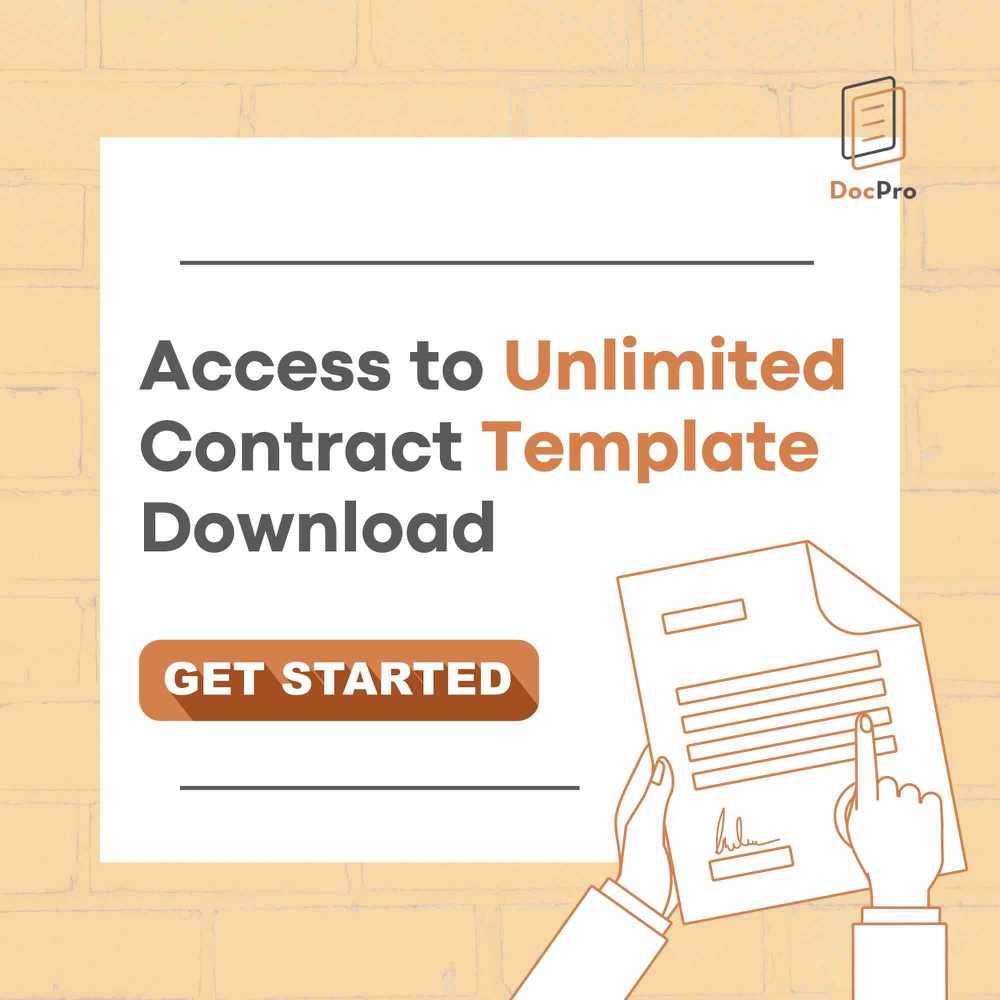What is a Software as a Service Agreement (SaaS)? (With Templates)
20 Jan 2023
8 Jul 2022
min read

Software services have become commonplace in our daily lives whether it be for personal or business use. Understand its terms of usage before inking on your signature.
Using a SaaS agreement template can help you make sure that you have all the elements you need for a binding agreement.
I. What is a software-as-a-service (SaaS) product?
A software-as-a-service product is a specific distribution model where software is managed centrally and rented out to customers.
These products usually run on a subscription, rental, or membership model for customer access rather than a one-off purchase. Customers do not have to host or run the application from their business premises but rather access services remotely.
SaaS products are commonly used not just in business but also in personal settings. Some examples are software such as Google Workspace, Dropbox, or Netflix.
II. What is a software-as-a-service agreement?
A SaaS agreement sets out the terms and conditions of the software delivery model, establishing the rules between the service provider and its users.
Having a well-drafted SaaS agreement is essential as more businesses start to rely on cloud-based software in their operations. It outlines both the user and provider’s legal responsibilities and matters such as licensing and use arrangements.
III. Pros and Cons of a SaaS Product
Pros
A SaaS product has many advantages. Unlike traditional software licenses which require hefty investments, customers under a SaaS model do not need to invest heavily in hardware, software and professional skills.
Providers also only need to deliver their service on a single platform, meaning that they can make changes or updates centrally which can be rolled out to the entire customer base.
Cons
However, this also means that it is rarer to see tailored customisation services as most SaaS providers use a “one-to-many” model which provides a uniform experience to their customers.
Many SaaS services also lack integration support for this reason, so companies might have to invest internal resources to integrate these platforms with any existing apps and services.
As data is also stored in the provider’s servers, parties need to carefully figure out arrangements for migrating or recovering data upon termination of the agreement.
IV. Components of a SaaS Agreement
The specific clauses of a SaaS agreement depend on factors such as the product, industry, or region. Generally, however, SaaS agreements have the following components in common:
A. Performance Objectives
The agreement should state the company’s obligations and what end users can expect from using the service. This includes any guarantees or minimum performance standards offered, such as:
-
-
Service availability
-
Uptime percentage
-
Provision of training
-
Up-to-date software
-
Regular updates
-
Compliance with reasonable customer directions
-
The company must also specify the start and end dates of the agreement and comply with any applicable laws or regulations in its performance of obligations.
B. Price
As SaaS services do not usually run on a one-time purchase but rather on continuous payment models, the details of any pricing arrangements must be clearly set out.
Most subscriptions offer monthly or annual purchase options. In some cases, semi-annual billing or more flexible arrangements may also be available.
The timelines of when sums are payable and any penalties for late payment can also be included under this section.
C. User Obligations
This section should outline the different obligations which an end-user has to abide by. This defines the scope of how the system can be used by customers, and whether customers have responsibility for upkeep such as notifying the provider of any breach or fault while using the system.
D. Prohibited Uses
Any prohibited uses of the system should also be clarified to ensure that customers do not misuse the application.
Some common examples of prohibited uses include:
-
-
Reverse engineering / decompiling / disassembling the product
-
Damaging the software
-
Reselling / reproducing the product
-
Modifying / adapting the product
-
Creating derivative works based on the software
-
Renting, leasing, or transferring rights in the software to any unauthorised person
-
Removing any proprietary notices, labels or marks in software or associated documentation
-
E. Access Rights and Users
As SaaS products usually operate using membership or subscription models, they should outline metrics, if any, to monitor access to their software.
For instance, some products only allow users a certain amount of data or uses a month. Products with different membership tiers should also specify the level of access available to each client.
This section should further specify the means of access (e.g. platforms the software are accessible from) and the parties that are authorised to use the software.
F. Customer Service and Support
Remote software means providers will likely need to provide training on the usage of the software or platform to their clients. The details of how to access customer service or how to request assistance on operating the software should be outlined.
To assure clients, it is common for this section to include an estimated response time or any additional guarantees that the company offers.
G. Data Security
Handling data is a sensitive matter and must be done so with care. Both parties should therefore be clear on who gets the rights to data entered into the platform.
The agreement should also detail responsibilities for the upkeep and protection of data. This can include the following:
-
-
Encryption of data
-
Frequency of data backups
-
Protection mechanisms and security of entered data
-
Treatment of data upon termination, bankruptcy, or breach of use
-
Where data is stored
-
H. Licensing
Appropriate software licenses still need to be granted to clients for them to use the product without committing copyright infringement.
The scope of these licenses is usually narrowly defined to limit the usage of the software to agreed business purposes. A poorly drafted licensing clause risks the client being able to reverse engineer or use your software in ways you did not intend them to.
I. Termination and Renewal
This section establishes the processes for terminating or renewing the service agreement. Termination usually requires written notice and can be exercised in conditions such as:
-
-
Customer insolvency
-
Customer failure to pay usage fees
-
Material breaches of terms of the agreement
-
J. Governing Law
The jurisdiction of law governing the agreement must be set out clearly, as it may entail different hosts of rules for any legal proceedings or laws.
K. Privacy Policy
Providers also need to comply with relevant privacy laws and regulations depending on where they are doing business. A privacy policy can be included either in the SaaS agreement or separately which should outline the data collection, handling and processing practices of both parties.
Attention should be paid to provisions regarding the secure storage of personal data and whether it will be accessed by third parties for purposes such as marketing.
Examples of regulations include the European Union’s General Data Protection Regulation (GDPR), the California Consumer Privacy Act (CCPA), and the United States’ Federal Trade Commission (FTC) rules.
L. Dispute Resolution
The document should also lay out the process or mechanisms for resolving any disputes which may arise between both parties.
The first stage of the dispute resolution process is usually negotiations between both parties. If unsuccessful, the agreement should provide for alternative methods such as mediation or arbitration which brings in an impartial third party to recommend an outcome.
Having a structured dispute resolution clause can allow both parties to attempt to resolve issues more amicably before resorting to litigation, which is much more resource-heavy and costly.
Conclusion
SaaS agreements are lengthy but necessary to protect both the company and the customer. A poorly drafted agreement may discourage users from using a service as even the smallest errors may have significant impacts on a business. Clearly defining arrangements such as support, maintenance, or payment terms can give greater assurance to customers for products.
Related Documents
-
SaaS Reseller Agreement: Allows a reseller to resell a company’s SaaS software and services to customers in their territory
-
SaaS Agreement: Document granting customers access to a SaaS software on the provider’s platform
-
Click-wrap, End User License Agreement: Contract between Licensor and user of the software
-
Software License: Terms and conditions for software including licensing and any warranties provided.
Please note that this is a general summary of the position under common law and does not constitute legal advice. As the laws of each jurisdiction may be different, you may wish to consult your lawyer.
Keywords:

